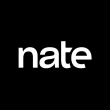Viewpoint: A Closer Look at Choosing an HSA Administrator (July 2013)
 By Dennis Triplett, UMB Healthcare Services, a division of UMB Financial Corporation
By Dennis Triplett, UMB Healthcare Services, a division of UMB Financial Corporation
Consumer-directed health care plans partnered with health savings accounts (HSAs) continue to gain popularity as a cost-effective option for both employers and individuals. However, picking the right HSA provider is not so cut and dry. Employers looking at consumer-directed health care plans with HSAs tend to pick providers based on one or two administrative details, but they really need to dig into what kind of benefit experience employees will get. The quality of that interaction can make all the difference, and yield happy, engaged employees.
The truth is, HSA administrators are not all created equal—they differ in philosophy, experience and support levels for employees. All too often, employers make decisions on who will run their HSA plans based on a cursory look at the monthly fee. But if employees find it is a hassle to deal with their HSAs, or if extra fees pop up, or if there is no communication, the plan will fail both the employees and the employer.
On the other hand, an HSA administered with the customer in mind can deliver a very significant boost to an employer’s success—improving the well-being of employees, reducing long-term costs across the work force and bringing a positive experience to the whole organization.
Employers can look for the following six best practices in HSA plans that help drive business success:
Support of employer’s goals: An HSA provider should be fully engaged in helping employees know that their employer cares—not only by providing benefits but also by promoting the health and wellness of employees. An HSA administrator who thinks the job is to passively administer accounts doesn’t get it.
For example, a plan provider should partner with the employer to help educate employees on how to make the most of their benefits and even how to enjoy a healthier lifestyle. This kind of commitment to communicate with employees should run throughout the year—not just at enrollment time.
Hassle-free administration: An administrator should avoid bureaucratic practices that cause problems for HSA end-users. These hassles come back to haunt employers, either as complaints by employees or (worse yet) silent dissatisfaction and distrust of the organization’s benefit programs.
Examples of practices to avoid: an administrative policy of placing a hold on funds contributed to an HSA for several days before they can be spent, complex or difficult procedures for identifying employees when they enroll in their HSAs, and slow issue-resolution times (or a lack of data available on response times).
Actionable analytics: Because employees’ use of health care benefits generates a wealth of information, a plan administrator should deliver content-rich reports to enable the employer to respond to trends in the workforce. The employer can influence employees’ health choices to improve wellness and contain costs.
For example, an HSA administrator can track and report the types of distributions from accounts, ratios of employee saving to spending and changes in HSA balances by tiers. This aggregate data, while protecting employees’ privacy, allows employers to implement actions that can improve employees’ health and satisfaction levels over the long haul. This data also provides the information necessary to validate and adjust the employers’ HSA strategy. Based on what trends are occurring within the employees’ accounts, the employer can make critical decisions to positively impact their desired end result.
| HSAs should provide attractive, modern features that enhance usability from the consumer’s standpoint. For example, many employees today prefer to use mobile banking to handle accounts from their smartphones or to manage accounts online from their computers, including paying bills or making account transfers. |
Straightforward pricing: An HSA administrator’s list of fees should be simple and short. Some plan providers have a schedule of 50 or more separate fees for HSAs. And the trouble is, many employers comparing plans only check the basic monthly fee for accounts.
When an HSA provider has excessive fees, employees get some nasty surprises—large charges for additional cards or replacement cards, statement fees, charges for PIN-enabled transactions and fees for corrected IRS filings, for example. Of course, those surprises come back to the employer in the form of complaints and bad feelings about the benefit.
Consumer-friendly features: HSAs should provide attractive, modern features that enhance usability from the consumer’s standpoint. For example, many employees today prefer to use mobile banking to handle accounts from their smartphones or to manage accounts online from their computers, including paying bills or making account transfers.
Employers interested in promoting employees’ well-being over the long haul will want to encourage saving within HSAs. An account provider should offer both a fair interest rate on funds in the accounts and multiple investment options in the HSAs to encourage long-term saving for health needs.
Financial security: Most of us take for granted the safety of a bank that holds HSA funds, but employers should not assume the money is secure. As some employers have discovered in recent years, a benefit plan is only as safe as the partners providing the services. Unfortunately, if a partner in a benefits program becomes financially distressed, the reputational damage also tarnishes the employer.
Two safeguards: An employer should take a close look at ratings of the bank that will hold HSAs—and stick with safe-and-sound institutions. Also, an employer should understand the account structure: whether the HSAs are individual direct deposit accounts “DDAs,” providing one-to-one bank relationships for employees, or pooled “omnibus” funds, where an administrator’s record-keeping is critical to protecting each person’s assets. Either way, the critical point is to consider the financial strength of the plan provider.
HSAs paired with high-deductible health plans are an excellent option for employers seeking to provide convenient, economical coverage for employees while encouraging the consumer choices that lead to a healthier, more satisfied workforce.
The six issues outlined above merit due diligence from employers. By spending a little more time on the choice of HSA providers—or engaging a qualified broker or agent to conduct the research—an employer can ensure a good experience for the entire organization.
Dennis Triplett is CEO of UMB Healthcare Services, a division of UMB Financial Corporation, which delivers healthcare payment solutions, including custodial services for health savings accounts (HSAs) and private-label, multipurpose debit cards to insurance carriers, third-party administrators, software companies, employers and financial institutions. He can be reached at [email protected].
In Viewpoints, prepaid and emerging payment professionals share their perspectives on the industry. Paybefore endeavors to present many points of view to offer readers new insights and information. The opinions expressed in Viewpoints are not necessarily those of Paybefore. If you’re interested in contributing to Viewpoints, contact Loraine DeBonis.











































